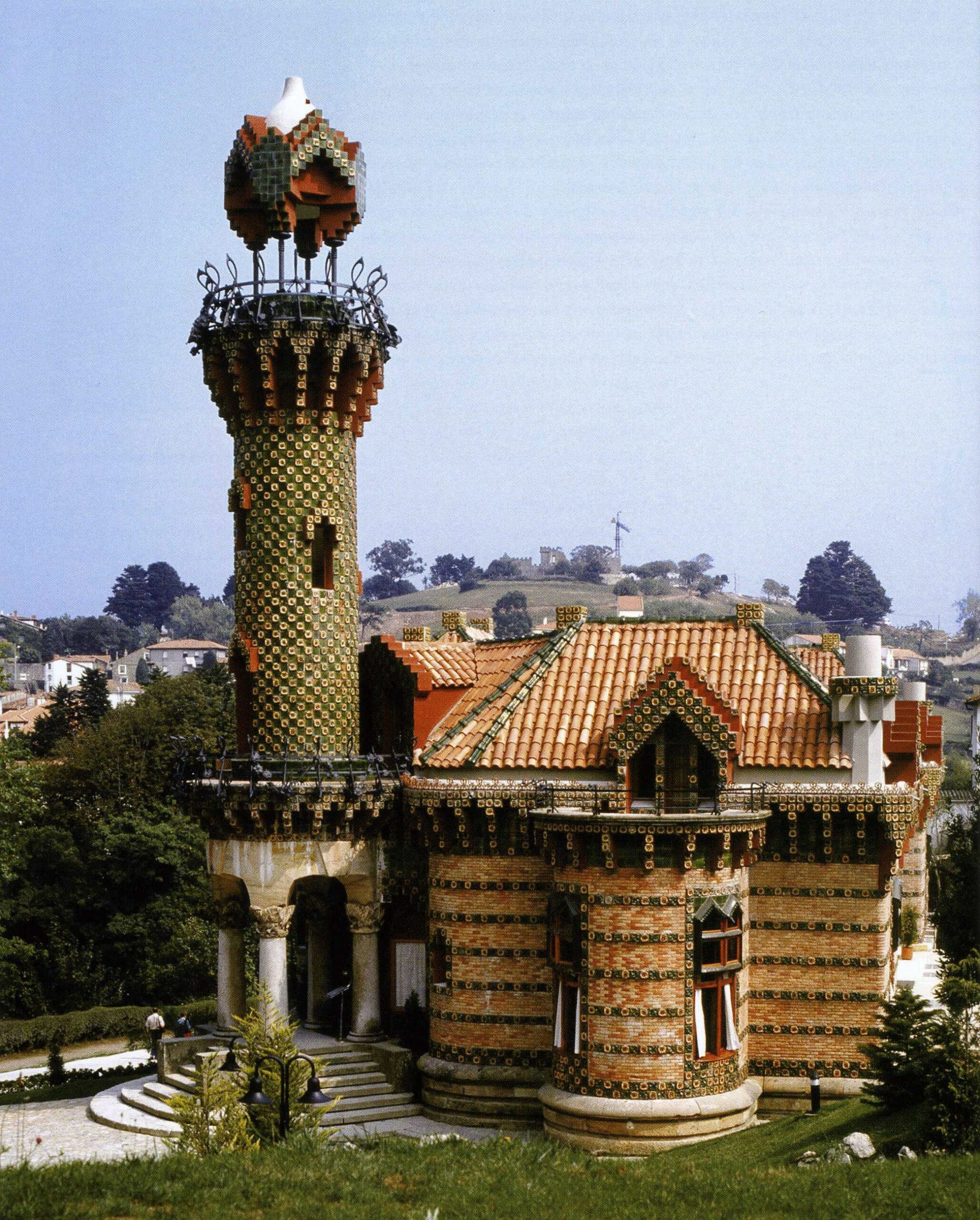Step into the captivating world of Antoni Gaudí, a visionary Catalan architect who left an unforgettable imprint on Barcelona’s cityscape. Imagine a realm where buildings breathe with life, adorned with intricate details and flowing forms that seem to defy gravity. Gaudí’s creations, such as the awe-inspiring Sagrada Família, the whimsical Park Güell, and the otherworldly Casa Batlló, have become architectural icons that define the city’s character. Get ready to delve into the life, work, and enduring legacy of Antoni Gaudí, the man who transformed Barcelona into an architectural wonderland.
A Life Cast in Stone and Imagination
Antoni Gaudí i Cornet, a name synonymous with Barcelona’s captivating skyline, wasn’t just an architect; he was an artist who painted with stone, glass, and imagination. While his birthplace is often cited as Reus, a town in the heart of Catalonia, some documents suggest he may have been born in the nearby village of Riudoms. This debate, however, does little to diminish the impact of his Catalan heritage on his life and work.
Born into a family of humble coppersmiths with roots tracing back to the Auvergne region of France, Gaudí’s fascination with design and structure manifested early on. His childhood was steeped in the intricacies of craftsmanship, fostering an innate understanding of materials and their potential. Beyond the workshop, nature served as his playground and his muse. The way sunlight filtered through leaves, the organic curves of seashells, and the intricate patterns found in nature all captivated his imagination, hinting at the organic forms that would later define his architectural style.
A Symphony in Stone: The Evolution of Gaudí’s Style
Gaudí’s path led him to Barcelona’s Escola Tècnica Superior d’Arquitectura, but his true education blossomed beyond the confines of the classroom. His architectural style, far from adhering to a singular school of thought, evolved through distinct phases, much like a symphony transitioning between movements.
Early influences, particularly the Mudéjar style with its echoes of Moorish aesthetics, are evident in his early works, showcasing intricate detailing and a penchant for traditional materials. As Gaudí matured, his style gravitated towards the sinuous lines and organic forms found in nature. This transition, often categorized as his Gothic and Naturalistic phase, marked a pivotal point in his artistic journey. During this period, Gaudí began to experiment with innovative structural systems and incorporated elements of Catalan nationalism into his designs.
His signature style, often described as Catalan Modernism, reached its zenith during what architectural historians categorize as his Expressionistic and Final periods. It was during these pivotal phases that Gaudí fully embraced nature as his guide, crafting buildings that seemingly pulsed with life. His structures, adorned with vibrant colors, playful mosaics, and an almost sculptural use of light, defied the rigid conventions of traditional architecture, offering the world a new language with which to experience space and beauty.
Gaudí’s architectural philosophy, however, extended far beyond aesthetics. He believed in a holistic approach to design, seamlessly blending form and function while remaining deeply rooted in his Catalan identity. Local materials, traditional craftsmanship, and a profound respect for the surrounding environment became integral components of his architectural vocabulary.
Masterpieces in Stone and Light: Gaudí’s Enduring Legacy
The Sagrada Família basilica, perhaps his most iconic creation and a project spanning over a century, stands as a testament to Gaudí’s unparalleled genius. This monumental basilica, still under construction today, embodies a harmonious fusion of architectural grandeur and profound religious symbolism. However, to limit Gaudí’s legacy to a single structure, however magnificent, would be a disservice to the breadth of his creativity.
A leisurely stroll through Barcelona reveals a series of architectural marvels, each bearing the unmistakable imprint of Gaudí’s imagination. Park Güell, with its mosaic-covered benches, whimsical structures, and playful integration of nature, feels like stepping into a fantastical dreamland. Casa Batlló, a private residence transformed into a living, breathing work of art, captivates the eye with its undulating façade, adorned with colorful mosaics that shimmer like dragon scales. These landmarks, along with other notable works like Casa Milà, Palau Güell, and Casa Vicens, form a captivating Gaudí trail through Barcelona, attracting visitors from every corner of the globe who come to marvel at the architect’s boundless imagination.
Gaudí’s artistic spirit, however, wasn’t confined to the realm of architecture. A devout Catholic, he wove religious symbolism into the very fabric of his creations, adding layers of meaning and spirituality to his designs. Gaudí also understood the importance of collaboration, working closely with talented artists, craftsmen, and fellow architects to realize his extraordinary visions.
An Untimely End and a Timeless Legacy
Tragically, Gaudí’s life was cut short in 1926 when he was struck by a tram, leaving behind a legacy that continues to inspire and intrigue. While he couldn’t have foreseen the technological advancements of the 21st century, his innovative spirit finds new life in the digital age. Today, cutting-edge technologies like 3D printing and parametric design are being employed to complete his unfinished masterpiece, the Sagrada Família, offering an unprecedented glimpse into the mind of a visionary and the potential of his unrealized designs.
Antoni Gaudí i Cornet’s legacy transcends the boundaries of architecture. He stands as a testament to the power of imagination, a reminder that the limits of art are self-imposed. He dared to envision the world through the lens of nature, translating its organic beauty into breathtaking structures that continue to captivate and inspire generations. His story is a vibrant tapestry woven from creativity, innovation, and an unwavering belief in the power of architecture to elevate the human spirit.
What is Antoni Gaudí’s Most Famous Piece?
If you had to pick just one masterpiece from Antoni Gaudí’s incredible collection, it would likely be the Sagrada Família. This basilica in Barcelona, Spain, is more than just a church – it’s a breathtaking work of art that’s captivated people from all over the world. Its sheer size and mind-blowing details are unlike anything you’ve ever seen, and it’s no wonder that Gaudí is considered one of the greatest architects who ever lived.
What makes the Sagrada Família so special? Gaudí dedicated over 40 years of his life to this project, which became his most profound artistic and spiritual endeavor. Construction commenced in 1882 and continues to this day, a testament to the complexity and ambition of Gaudí’s vision. The basilica’s soaring spires, adorned with colorful mosaics that depict biblical narratives, evoke a sense of otherworldly beauty that draws millions of visitors each year.
The Sagrada Família exemplifies Gaudí’s signature style, characterized by its fluid, organic forms, vibrant and often symbolic use of color, and deep-rooted religious themes. Designated a UNESCO World Heritage Site, the basilica stands as a symbol of Gaudí’s unwavering passion and his wholly unique vision, a legacy cast in stone and light that continues to inspire awe and wonder.
What is Antoni Gaudí’s Style Called?
Categorizing Antoni Gaudí’s architectural style is like trying to confine a force of nature within a carefully constructed box – it simply can’t be done. While his masterpieces are often grouped with Catalan Modernism and Art Nouveau, Gaudí’s genius transcended such labels, forging a path uniquely his own.
Imagine buildings that seem to breathe and flow like living organisms, their facades bursting with colorful mosaics and crafted using unexpected, almost whimsical, materials. This is the essence of Gaudí’s style. His work drew inspiration from the natural world, finding poetry in the curves of a seashell or the intricate patterns of leaves. His deep Catholic faith, too, found expression in his designs, adding layers of symbolism and spirituality to his creations. And let’s not forget his Catalan roots, which shine through in his use of traditional crafts and his celebration of local culture.
All these elements, when filtered through Gaudí’s boundless imagination, resulted in something truly unique – a style often described as “sui generis,” meaning “one of a kind.” It’s a testament to the enduring power of his vision that even today, architects and designers marvel at his audacity and ingenuity, striving to unlock the secrets behind his timeless aesthetic.
What Was Antoni Gaudí’s Masterpiece?
Choosing a single masterpiece from Antoni Gaudí’s extraordinary body of work is a near-impossible task. Each of his creations possesses a unique magic, a captivating blend of artistry and innovation. However, if one structure stands out as the pinnacle of his artistic achievement, it is undoubtedly the Sagrada Família.
Imagine this: soaring spires reaching towards the heavens, their surfaces adorned with vibrant mosaics that narrate stories from the Bible. The Sagrada Família, even in its unfinished state, transports visitors to a realm where faith and imagination intertwine, a testament to Gaudí’s lifelong dedication to this monumental project. People from every corner of the globe make the pilgrimage to Barcelona just to witness this extraordinary fusion of architecture and spirituality, a testament to the basilica’s power to transcend cultural and geographical boundaries.
While the Sagrada Família may be the crown jewel of Gaudí’s career, his other works are no less significant in showcasing his genius. Casa Batlló, with its skeletal balconies and undulating facade reminiscent of dragon scales, embodies Gaudí’s mastery of blending architectural elements with organic forms. Park Güell, a public park transformed into a whimsical dreamscape, demonstrates his ability to seamlessly integrate architecture with the natural world. These remarkable creations offer a glimpse into Gaudí’s unique perspective, revealing a mind that saw beyond the mundane, transforming everyday structures into extraordinary expressions of art and imagination.
To truly appreciate the genius of Antoni Gaudí, one must experience his work firsthand. No photograph or written description can fully capture the sense of awe and wonder that washes over you when you stand in the presence of his creations. His buildings are not merely structures; they are living, breathing embodiments of his boundless creativity, invitations to step into a world where imagination knows no bounds.
- Unlock Elemental 2 Secrets: Actionable Insights Now - April 2, 2025
- Lot’s Wife’s Name: Unveiling the Mystery of Sodom’s Fall - April 2, 2025
- Photocell Sensors: A Complete Guide for Selection and Implementation - April 2, 2025
















